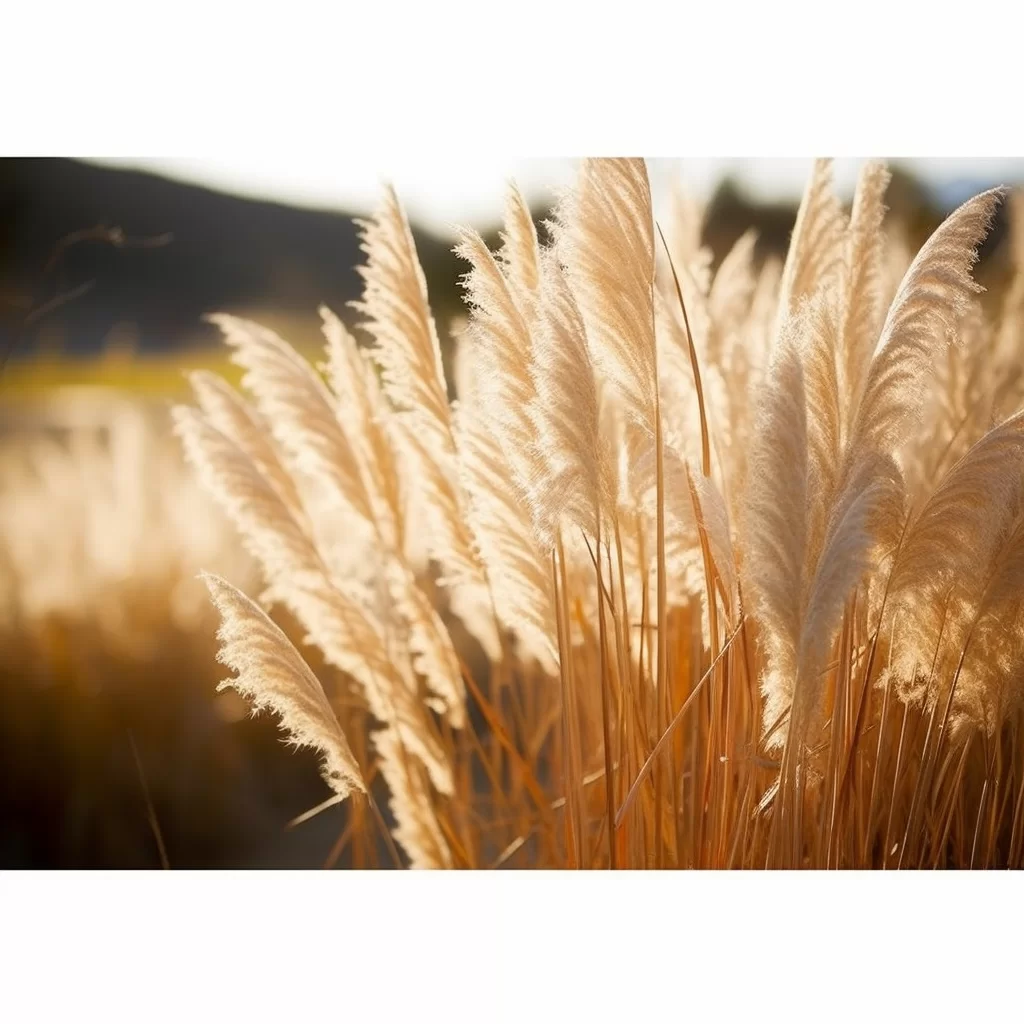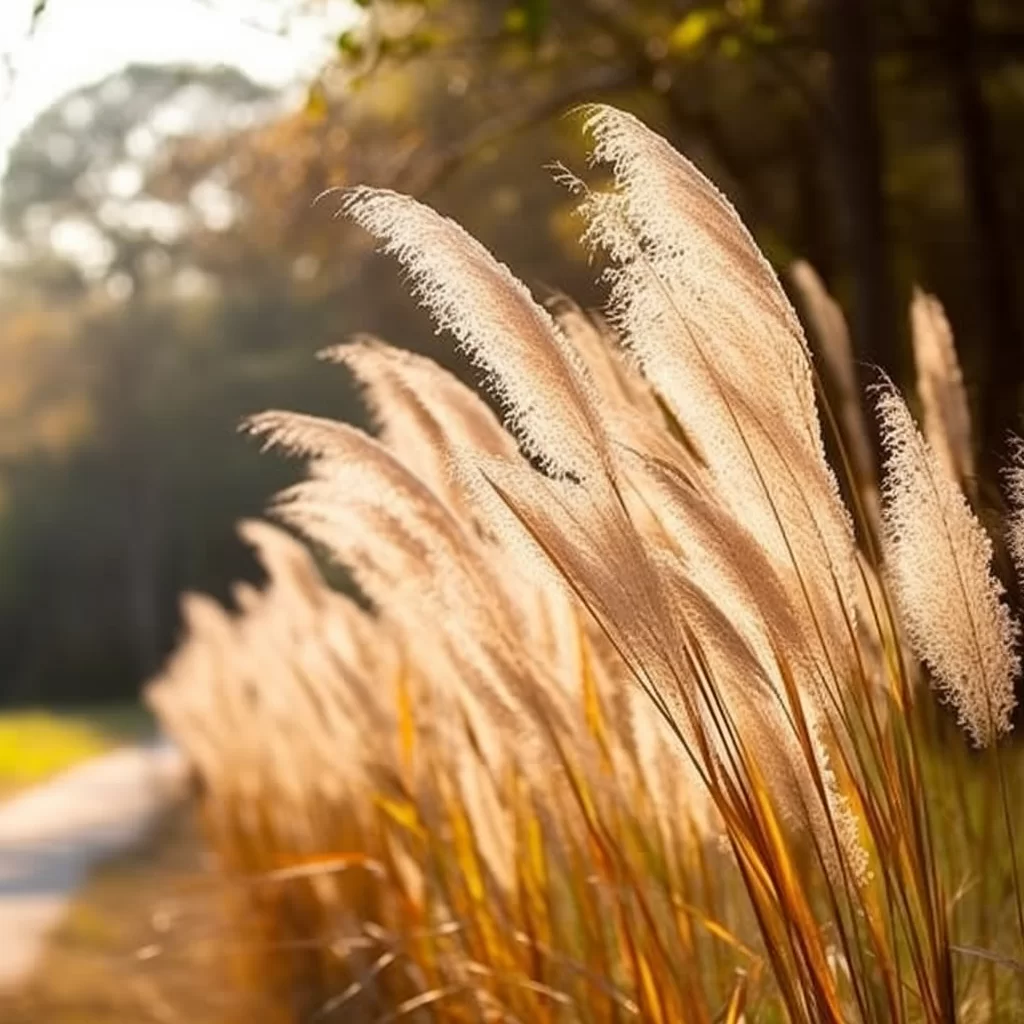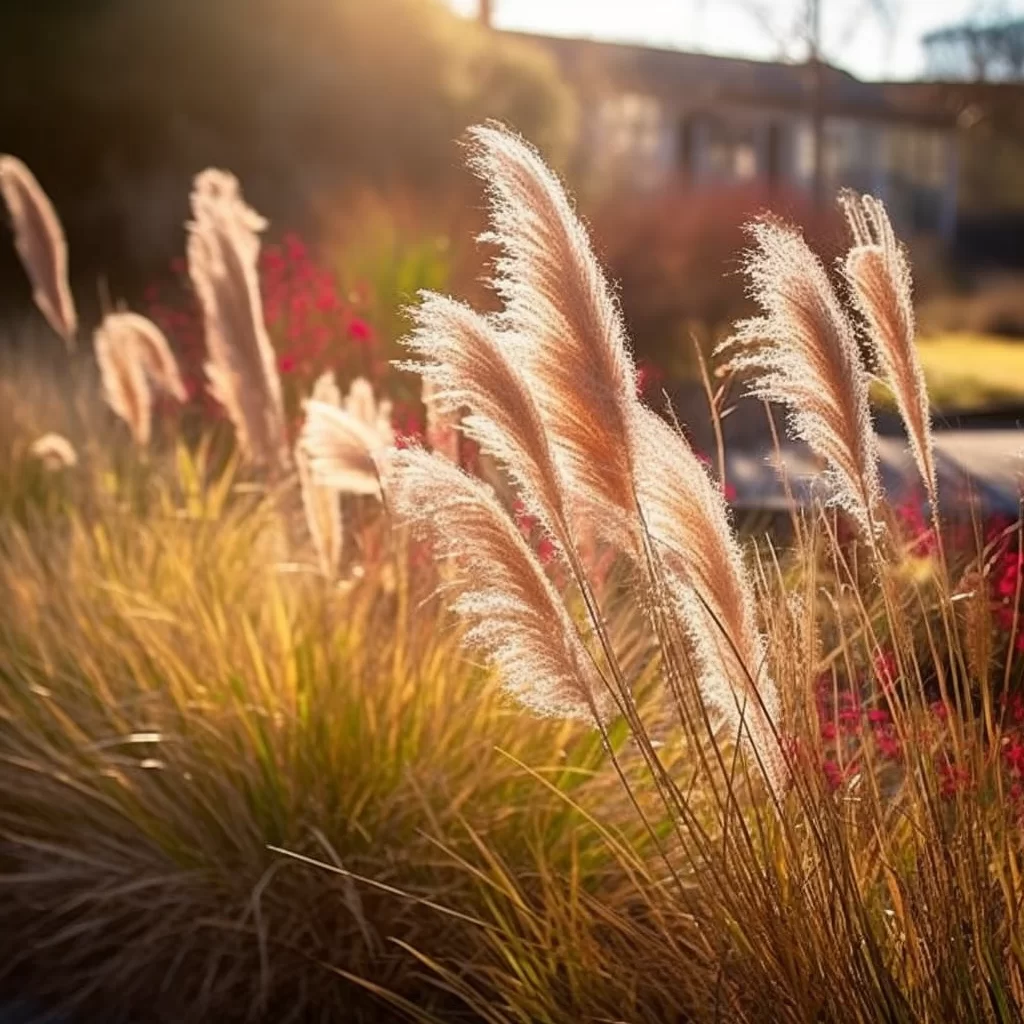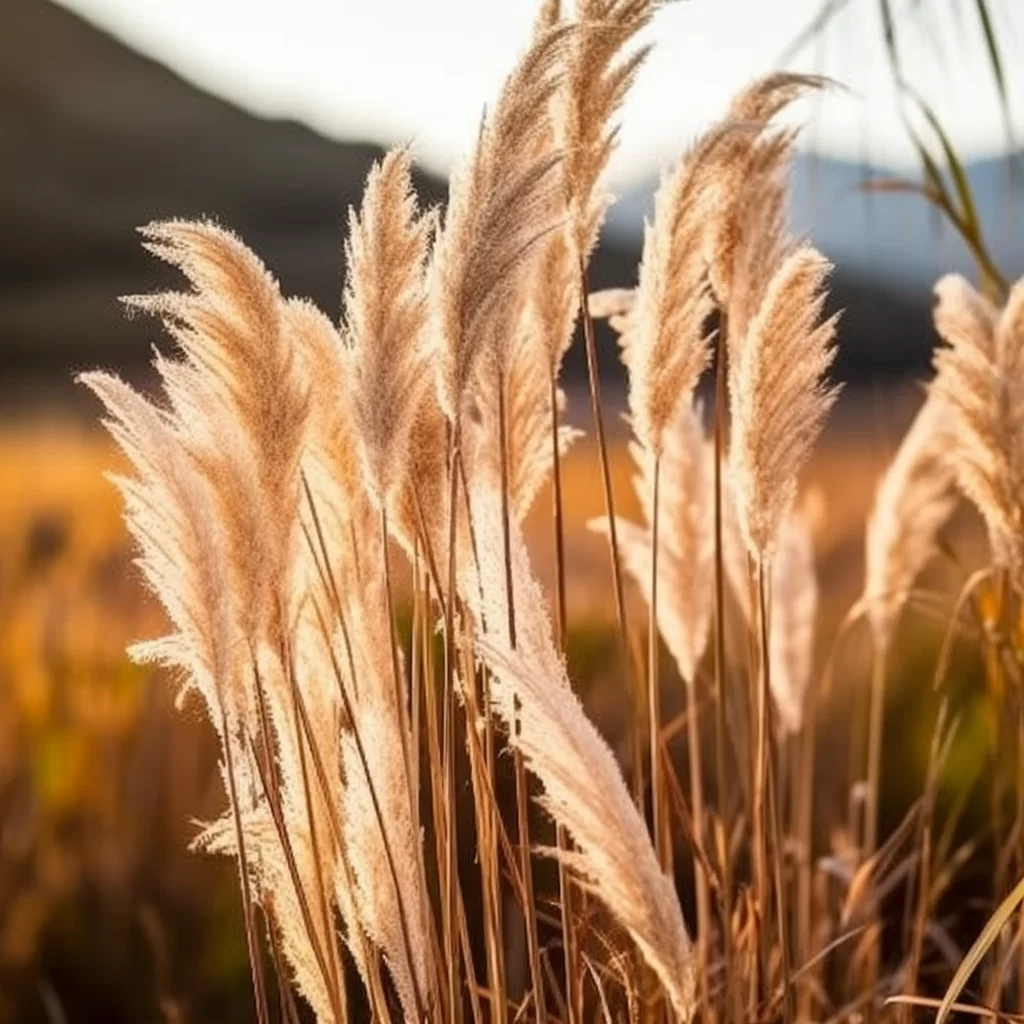Story of Day :
Contents
Pampas Grass Plant: A Complete Guide and Care Tips
If you’re searching for a plant that can bring a touch of elegance, grandeur, and texture to your backyard or garden, then pampas grass (Cortaderia selloana) might be the perfect candidate.
This stunning ornamental grass is renowned for its breathtaking plumes of creamy-white or pink flowers that can grow up to an impressive height of 10 feet.
Whether you want to create a focal point in your landscape design or simply add some variety and charm to your outdoor space, pampas grass has got you covered.
In this comprehensive guide, we’ll walk you through everything there is to know about pampas grass: from its origin and diverse applications to planting techniques and maintenance tips.Pampas grass is more than just another pretty plant – it also boasts a fascinating history and an array of uses beyond mere decoration.
Originally hailing from South America’s vast pampas plains (hence the name), this species has been cultivated around the world for centuries as food fodder, fuel source, roofing material, musical instrument components, and even weapons! Nowadays though, it’s primarily valued for its ornamental qualities; whether planted as a solitary specimen or grouped in clusters along borders or pathways, pampas grass exudes an undeniable sense of luxury and refinement that few other plants can match.
So if you’re looking for an eye-catching addition to your outdoor oasis that requires minimal upkeep but delivers maximum impact all year round – look no further than Cortaderia sello
History of Pampas Grass
Pampas grass is native to South America’s southern region around the Pampas plains.
It has been cultivated since the 1800s as an ornamental plant in Europe and North America.
Its popularity peaked in the 1970s when it became synonymous with the bohemian lifestyle.
Uses of Pampas Grass
Due to its hardiness, height, texture, and beauty pampas grass is often used as a focal point in garden design.
The large plumes offer contrast against other plants while adding depth and movement through their swaying motion.
It also attracts birds due to its seeds which are high in nutrients. In addition to its stunning natural beauty, pampas grass has another convenient feature: it can be easily preserved for indoor use.
In addition to its stunning natural beauty, pampas grass has another convenient feature: it can be easily preserved for indoor use.
Once the grass turns a beautiful brownish-golden color, it can be cut and dried out to create a unique and rustic decorative display.
This makes pampas grass an attractive choice for those who love bringing the outdoors in, as it adds a touch of nature to any space.
Whether used on its own or incorporated into other home decor items like wreaths or centerpieces, dried pampas grass is sure to catch the eye and add some natural charm to your living space.If you’re looking for an effortless way to add some personality into your home decor, look no further than dried pampas grass.
With its delicate texture and earthy tones, this versatile plant can brighten up any room with minimal effort required.
Not only does drying out the leaves give them an elegant golden hue but also allows them to last much longer than fresh flowers without looking wilted or lifeless.
Whether placed in simple vases throughout your home or used as part of more elaborate DIY projects like wall hangings or wedding decorations, pampas grass is sure to bring warmth and beauty wherever it goes!
Planting Pampas Grass
Before planting your pampa’s seedlings or divisions ensure that it receives full sun exposure for at least six hours daily- otherwise growth slows down significantly.
Soil requirements include soil pH between 6-8 with well-draining soil enriched by composted organic matter such as manure or leaf litter.When you’re planting seedlings, it’s essential to give them enough space to thrive.
A general rule of thumb is to have three feet between each young plant.
This distance provides enough room for your seedlings to grow and spread out their roots without competing for resources with neighboring plants.
To ensure that your plants get the best start in life, it’s also important to dig holes that are 1.5 times the width of their root balls.
This size allows the roots ample space to spread out and establish themselves in the soil. To properly plant your seedlings, make sure that they are at ground level once placed into their holes.
To properly plant your seedlings, make sure that they are at ground level once placed into their holes.
Then add soil back into the hole while pressing it down firmly around your young plant’s root ball area ensuring good contact with its new environment is created and no air pockets remain around its root system causing potential damage or drying out of tissues during establishment phase! With these simple steps, you can help your plants grow strong and healthy from day one!If you’ve recently planted pampas grass, it’s essential to water it frequently until it establishes firmly.
Once the roots have taken hold of the soil, watering once a week or whenever you feel that the soil has dried out will be sufficient.
To help your pampas grass thrive and conserve moisture around its base, consider applying 2-3 inches of mulch.
This layer not only helps prevent weed growth but also keeps moisture locked in, which is especially important during hot summer months.Watering new plants can feel like a guessing game; however, with pampas grasses, providing regular hydration is crucial for their establishment period.
Once they are stable in their new home and ready to grow tall and strong (which can take up to three years), reducing your watering schedule will be appropriate.
In addition to limiting water intake, surrounding your pampas grass with a layer of mulch offers many benefits for this low-maintenance plant’s longevity and overall health.
The perfect combination of moisture retention and weed control makes mulching an essential part of taking care of your brand new pampas grass investment!
Care Tips for Pampas Grass
Once established, pampas grass is an easy-care ornamental grass that requires little maintenance beyond occasional pruning as part of regular garden upkeep. If you want your plants to flourish in the coming season, it’s important to give them a little TLC before the growing season begins.
If you want your plants to flourish in the coming season, it’s important to give them a little TLC before the growing season begins.
One of the best things you can do is prune off any dead leaves or branches in late winter.
This not only helps keep your plant looking neat and tidy but also encourages healthy growth by removing any diseased or damaged parts.
Plus, pruning at this time won’t interfere with new growth that will start appearing soon after.Another thing to keep in mind is what to do with flowers once they’ve bloomed.
While it’s tempting to leave them on for as long as possible, doing so can actually attract unwanted pests and diseases such as mold.
Instead, use sharp pruning shears to cut off the spent blooms right after they’re finished flowering.
This not only keeps your plant looking fresh but also helps channel its energy into producing new buds rather than trying to sustain old ones that are no longer needed.
With just a few simple steps like these, you’ll be well on your way to having a thriving and beautiful garden all year round!Pampas grass is a beautiful addition to any garden, but it can be vulnerable to pests like mealybugs.
Luckily, these pesky bugs can be easily controlled with insecticidal sprays or neem oil.
If you notice an infestation, simply apply the spray or oil and watch as the mealybugs disappear.
However, it’s important to note that using chemicals should always be a last resort and other natural methods of pest control should be tried first.In addition to pests, pampas grass is also susceptible to fungal infections.
To prevent this from happening, it’s important to water at soil level rather than from above using sprinklers.
This helps avoid excess moisture on the leaves which can encourage fungal growth.
By taking these simple steps towards keeping your pampas grass healthy and free of pests and fungus, you’ll ensure that its beauty will continue for years to come!
Summary
Pampas grass is a beautiful ornamental plant known for its height, texture and drama that adds movement through swaying plumes against other plants making it perfect for garden design focal points.The key takeaway from this article is that you need to ensure full sun exposure during planting while following proper planting procedures with well-draining soils enriched with organic matter.Finally,maintenance involves pruning dead leaves/cutting off flowers once bloomed,taking care not to water from above always watering at the soil level among other tips.So go ahead,get some pampa’s seeds today!